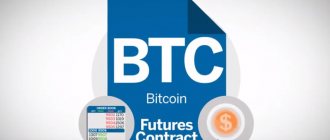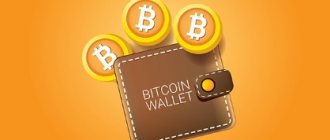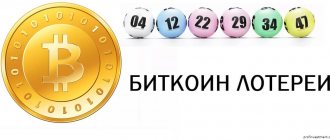Cryptocurrency Certification Consortium C4
One of the educational programs called Cryptocurrency Certification Consortium (C4) trains certified Bitcoin specialists. At C4 there are three types of courses that allow you to become:
Certified Bitcoin Professional (CBP); Certified Bitcoin Expert (CBX); Certified Ethereum developer.
CBP graduates should have a good understanding of the Bitcoin protocol, the Bitcoin transaction process, and the operation of the Btc network. C4 states:
“CBP professionals must be able to apply Bitcoin technology to their professional area of expertise and must understand the privacy considerations, cost mechanisms, and other issues associated with cryptocurrency.”
The CBP fee includes two years of training for $95 and can be an additional $30 if you need to extend your training.
The CBX course provides personalized “expert-level knowledge” about Bitcoin, C4 says. The consortium also claims that the certification gives an individual the ability to develop blockchain-based applications. This course is designed for three years, but is not yet available to students.
“CBX graduates understand how Bitcoin network peers work, how byte-level transactions are processed, and how Bitcoin scripts can be written to set up transactions.”
The consortium is supported by a board of directors consisting of Andreas M. Antonopoulos, Vitalik Buterin and Michael Perklin. In addition, C4 has renowned advisors such as Ethereum co-founder and Bitcoin Education project director Charles Hoskinson, Bitcoin Core developer Peter Todd, and Kryptokit and Rushwallet author Steve Dach.
Trading on cryptocurrency exchanges
Virtual exchange platforms are the most popular way to trade and invest in digital money. To do this, you need to register on the exchange, go through verification, and add cryptocurrency to your account. The main problem is purchasing digital money, since many exchanges do not allow you to buy cryptocurrency through bank cards. That is, you must add to your account a currency that has already been purchased and quoted on the selected exchange. How to do it? To do this, you can use online exchangers or other exchanges that accept bank cards and fiat currency, and then transfer the purchased crypto to another exchange where you want to trade. Then you trade using the classic mechanism - buy lower and sell higher using sell and buy orders. It is worth understanding that in order to carry out a trading operation you must have an opposing counterparty, and if the price at the time the order is opened sharply falls or rises, your order may not be executed. For forecasting, exchange platforms are usually equipped with several technical indicators and Fibonacci levels. Another characteristic feature of trading on a crypto exchange is the lack of credit funds. That is, you will not be able to buy more coins than you have money for and you will not be able to sell more than you have.
However, today many exchanges are starting to provide margin trading services - for example, this function is available on the Poloniex exchange. However, we would like to warn you that when buying cryptocurrency for trading, you risk losing your funds due to its depreciation even before you begin direct trading.
Read! Binary options trading strategy "Pigeon"
Digital Currency Council
The Digital Currency Council (DCC) was created in 2014 in New York by David Berger, the founder and CEO of this school. DCC claims that more than 1,500 students from 90 countries are trained and certified here. The organization also calls itself “an association of digital currency economics professionals.”
The DCC Professional Certification Training program is shorter than the two-year C4 consortium course and includes only 7 hours of online program. However, the course is much more expensive at $299 for final exam takers. DCC's advisory faculty work across six areas of science that fall under the "core competencies":
Technical basics of cryptocurrencies; Financial complications; Practical use of cryptocurrencies; Bitcoin system; Accounting; Legal issues.
DCC also offers a self-assessment test to see if you have enough background knowledge to pass DCC courses. The school is supported by Barry Silbert's cryptocurrency group and 500 Startups (Silicon Valley).
“DCC certification allows us to attract industry professionals [educators] who work with students to a high standard and who act as a personal reference point for [students’] assessment of their own skills and professional worth,” explains DCC CEO Barry Silbert.
Features of cryptocurrency trading
In fact, the whole principle of trading comes down to the classic “buy cheaper - sell more expensive”, however, the mechanism and methods of forecasting require more in-depth knowledge in the specifics of this branch of the financial market:
Increased volatility
The volatility of digital assets is much higher than that of standard currency pairs or securities. The price can rise by 100% in a day, which opens up an excellent opportunity for making money. Such volatility also contributes to the absence of clearly defined trends and narrow sideways movements. Mostly the price moves impulsively, creating so-called pumps, after which it goes into corrections, sometimes reaching 70-100% of the previous surge. When going flat, the price rarely makes sweeping movements, narrowing the amplitude of its fluctuations, while the trend in the cryptocurrency market alternates less frequently with sideways movement than in the foreign exchange market.
Operating mode 24/7
A characteristic feature of cryptocurrency exchanges is their 24/7 operation, which mainly contributes to the high volatility of assets at any time of the day or night. Also, this mode of operation allows you to trade even on weekends, which is absolutely impossible with other asset classes. At the same time, you will be able to carry out trading operations regardless of which trading platform you choose - an exchange or a brokerage company platform.
Good predictability
Despite the high volatility, unpredictability of the reasons for a sudden increase or decrease in the rate of a digital currency and the general specifics of the operation of cryptocurrency exchanges, the simplest technical analysis approaches can be used to predict the market for a crypto asset. For example, strategies based on moving averages and several oscillators, or systems based on the Fibonacci grid will work well. Of course, “crazy” price dynamics significantly increase the risk in trading, so it is customary to trade on price fluctuations only on time frames H1 and older. However, as a beginner, scalping on minute charts is of no use to you, so it is best to trade using long-term strategies.
Read! Binomo broker trading terminal
Coursera: Bitcoin and Cryptocurrency Technology
The Coursera course entitled “Bitcoin and Cryptocurrency Technology” is a free course from Princeton University. Assistant Professor Arvind Narayanan teaches classes in a variety of subjects that cover innovative technologies at the "technical level". Classes begin on May 15 and will cover cryptographic building blocks, cryptocurrency concepts, and more.
“After this course, you will know everything you need to be able to separate fact from fiction regarding cryptocurrencies,” explains the Princeton Coursera website. “You will have the conceptual framework for developing secure software that can run on the Bitcoin network. You will also be able to integrate Bitcoin ideas into your own projects.”
Coursera classes last eleven weeks, during which decentralization, btc mechanisms, regulation, mining and much more are discussed. Each week the course offers an interactive tutorial, videos, quizzes, and projects. Additionally, students can interact with other peers and talk about course materials.
How to make money on cryptocurrency
Since the advent of virtual money, many ways to earn them have appeared:
- buying cryptocurrency;
- stock trading;
- mining;
- cloud mining;
- investments in ICO;
- equipment development;
- mediation in exchange;
- creation of a cryptocurrency startup;
- bounty system.
There are many more ways, but many of them are indirectly related to digital assets. Particular attention should be paid to the most popular methods of earning money.
Exchange trading
Trading is speculation on the difference in the value of financial assets. Making a profit will require in-depth study of the basics, constant improvement of skills in practice and regular monitoring of the market.
The essence of cryptocurrency trading is almost identical to classic Forex trading, but there are a number of features:
- high volatility;
- dependence of the exchange rate on user trust;
- uncertainty of the legal status of cryptocurrencies;
- discrepancy between quotes on different exchanges.
By trading cryptocurrency on exchanges, you can double your deposit within a few months (weeks, days).
Many brokerage companies working with Forex (Alpari, FXOpen) and binary options (Olymp Trade, Binomo) realized the promise of cryptocurrencies and added them to the list of trading instruments.
Mining
The method arose earlier than others and remains profitable. The point is to decrypt the digital code embedded in the block of the blockchain chain.
Solving the code takes a lot of time and power and requires the purchase of expensive equipment. You will have to spend money on electricity, depreciation of computer equipment and rent of premises. The income can cover expenses and bring significant profits.
You can mine different cryptocurrencies, but certain equipment is used for this.
Cloud mining
The principle of earning money is similar to the previous method, but does not require purchasing your own equipment. Special services with huge data centers with innovative technology provide computing power for rent.
By paying a certain amount, the investor can make a profit from mining. Annual returns on average range from 50 to 150%. Popular cloud mining services are:
- HashFlare;
- Genesis-Mining;
- NiceHash;
- Hashing24.
Earnings from cloud mining are lower than from regular mining, but the costs are much lower.
Step-by-step trading instructions for beginners
This part will be devoted to a short introductory course for beginners who want to join trading on cryptocurrency exchanges. The instructions are step-by-step and will briefly describe the algorithm for trading cryptocurrencies on the exchange. It is worth noting that if you are simply an ardent supporter of any technical innovation, then you do not necessarily have to resort to working with exchanges. In other words, if you are confident in the growth of a certain asset (cryptocurrency) in the future, and are going to purchase it. It’s easier to do this using regular cryptocurrency wallets. For example MyErherWallet (Wallets for ERC-20 tokens)
If your goal is to make money on speculative actions, then welcome to the exchange, first we need to decide on the choice of platform, we have a comparative review of exchanges for this.
Further, the general principle of working with the exchange, regardless of which one you choose, comes down to just one delay:
- Registration on a cryptocurrency exchange. For beginners, a suitable option would be Binance (link to review). Our analysis of popular exchanges will help you choose the best exchange - link
- Setting up authentication. (Linking an e-mail, adding 2fa, filling out personal data, and sometimes sending photos)
- account activation
- Replenishment of the exchange balance
- Go to the trading terminal (Parsing below)
If everything is clear with the first 4 points, then what about replenishing your account on the exchange, considering that exchanges, with the exception of some units, do not work with the ruble.
How to top up your balance on the exchange
The whole problem is that, as we have already said, the most popular exchanges such as Binance, Bitfinex, Bittrex and many others simply do not accept Qiwi, Yandex money, or even card payments, which means we will experience difficulties from the first contact with the exchange. Exchangers come to the rescue.
The exchanger allows you to exchange your ruble for any popular cryptocurrency. That is, we send him rubles, he sends them to us, digital money is already in our account on the exchange.
We won’t go far, let’s look at the example of the first exchanger we come across.
Exchanger
As you can see, we have chosen the Qiwi payment system (1) as a bargaining chip for the exchange, and are trying to exchange it for Bitcoin (2). Which will be credited to the exchange account, the address of which we will indicate in paragraph (4). In paragraph 3, we indicate how much and from what QIWI number funds will be transferred for exchange. The last thing you need to fill out is your contact information, which will provide information about the status of your procedure.
Which exchanger to choose
In order to choose a high-quality exchanger and be sure that your funds will reach the point of receipt, we will use the popular rating of exchangers - https://www.bestchange.com
Most recently, its Russian-language version was blocked in one of Roskomnadzor’s raids, so we can only be content with the English-language version. But here everything is already clear.
In the green window we select what we want to exchange and what to receive. A list of all available exchangers appears on the right. There is also information on their limits, exchange rate (exchangers earn from commissions), reserves, and the number of positive/negative reviews.
Exchanger page
When choosing the right exchanger, focus on those that are in the first points of the list. By default, the rating is sorted by commission size, so it is enough to select a crypto exchanger with a large number of positive reviews at the very beginning of the list.
How to trade cryptocurrencies on the exchange
Let’s dwell on the fifth point in a little more detail, and tell you the basics that will be useful in order to make your first transaction and finally move from simple trading to trading cryptocurrencies with profit.
Let's look at the screenshot below. There we see the terminal of the Binance exchange, from Binance - because other cryptocurrency exchanges have the same principle, the window sizes, color, location are different - but the logic is the same. The exchange has two terminals: Basic (with the least functionality) and advanced (for more experienced users, with a brutally dark interface. If friends come to your house, you can turn it on to look like a more serious trader)
Trading on Binance
We will not dwell in detail on each point, we will tell you what is necessary for the first acquaintance.
- Link to get to the terminal
- The window required to select a specific cryptocurrency
- List of already completed transactions by all traders who are currently trading on the exchange
- Window for selling the cryptocurrency you have chosen (if you purchased it previously). Price - Sales price
- Quantity - Quantity (you can specify a fractional value. You can use percentage buttons, which will automatically select the required portion of the funds available in your account
- Total - In this field we see how much cryptocurrency will be purchased in general. (In our case, how many bitcoins will be spent to buy BNB of the specified quantity at the specified price)
- Sell Button – Place an Order Directly
- Price - Unit purchase price
When trading, you always use the cryptocurrency trading pair with which the exchange takes place. That is, in addition to the fact that you have already exchanged your real rubles for Bitcoin through an exchanger and sent them directly to the exchange, on the platform itself you buy cryptocurrencies for Bitcoin. The screenshot shows that all assets are available for trading in pairs with BTC. If it is Etherium, then ETH/BTC, if it is, for example, Via Coin, then VIA/BTC.











